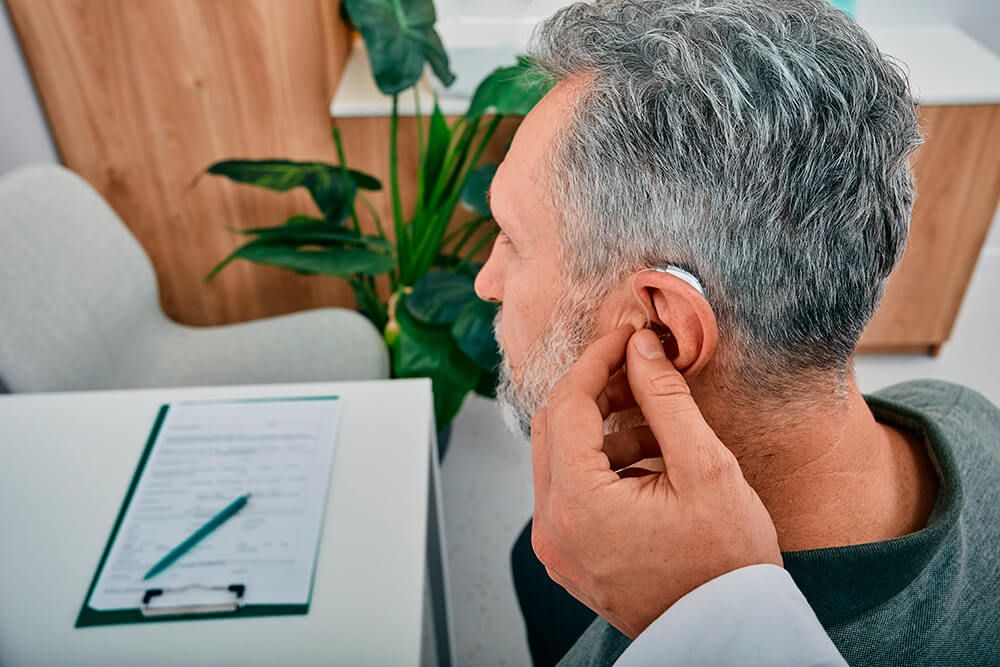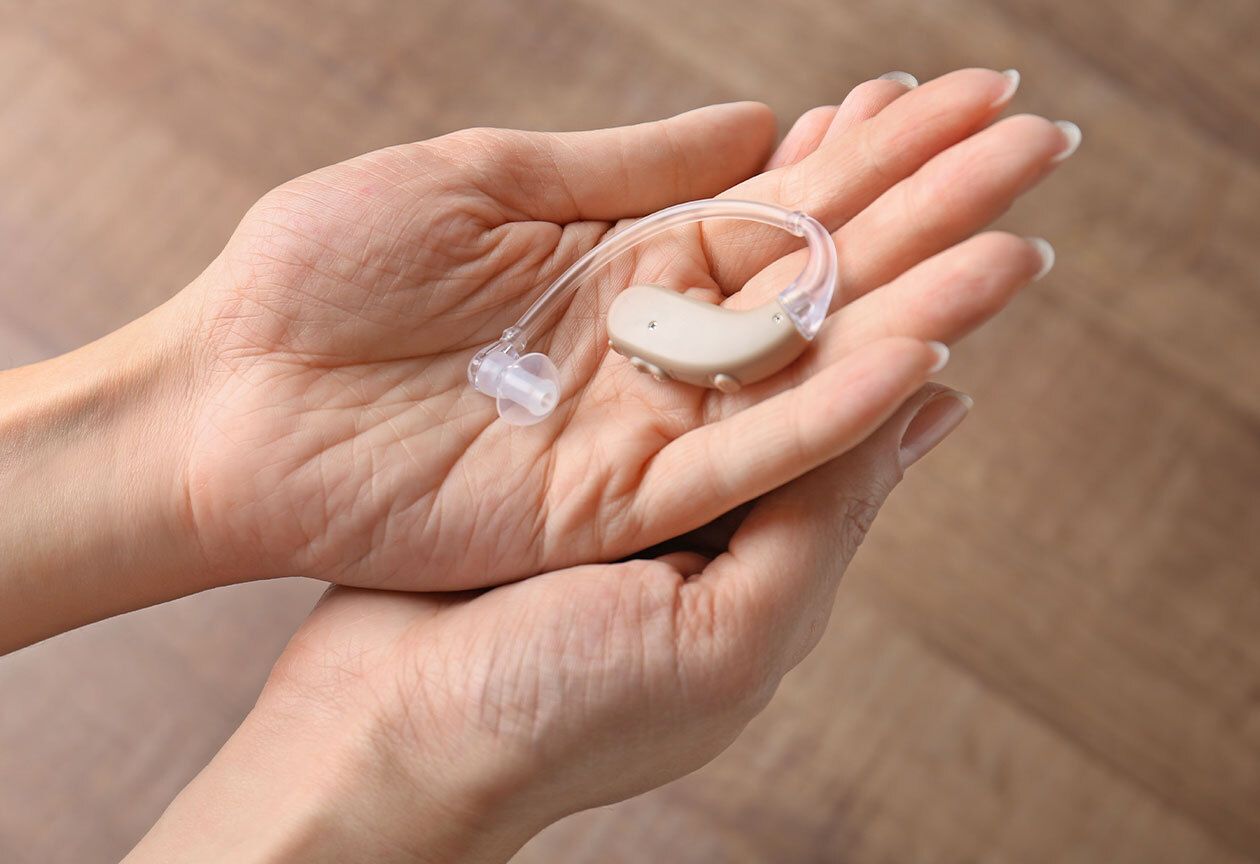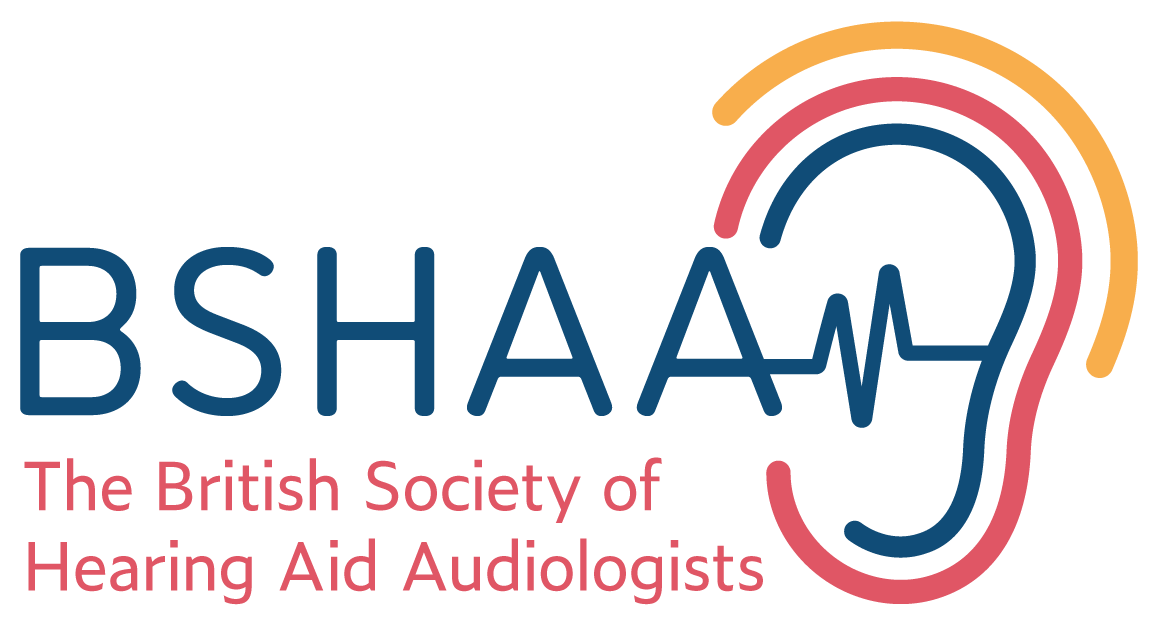For more maintenance tips for hearing aids in Belfast, Northern Ireland, our team at Hear ClearNI would be happy to assist you.
A Step-by-Step Guide

Wash your hands. Do this before every cleaning session. Never handle your hearing aids with unclean hands.
Remove your hearing aids. Detach the earmould from the ear hook/tubing.
Remove the batteries. You will want to clean the inside of the battery compartment as well.
Soak the earmould. Earmoulds are prone to discolouration over time. Soaking your earmold in warm, soapy water can help with this.

Clean your hearing aids with a dry cloth and soft-bristle brush. Do your best to clean out any visible openings. Clean the device downwards to loosen any dirt particles. Then, use a wax pick to clean away any leftover wax or dirt.
Optional: Sanitise your hearing aids. Use only a hearing aid sanitisation solution recommended by your audiologist. Never use harsh disinfectants or alcohol on your hearing aids.
Dry your hearing aids. This is an important step because hearing aids are water-resistant, but not waterproof. Allow them to fully dry overnight before use. Keep the battery compartment open to dry as well. You can also use a bulb blower to force out any leftover water trapped in the tube.
Store your hearing aids. When you are not wearing them, keep them in a cool, dry place to ensure no moisture lingers. Consider storing it in a box or storage kit.
How to Care for All Components of Your Behind-the-Ear Hearing Aids

Battery compartment
Use a dry cloth to clean any dust out of the battery compartment.

Hearing aid shell
Use a damp cloth to clean the outside of your hearing aids. You can then go over any stubborn build up with a brush.

Hearing aid earmould
This can be soaked and dried.

Hearing aid receiver
A small hole in your hearing aid that transmits the sound from the hearing aid to your ear. It is easy for wax to build up in here so be sure to gently remove the wax from the receiver with a brush or wax pick to dislodge it.

Hearing aid microphone
Like the receiver, the microphone is very delicate and should be handled carefully. Carefully brush the port but do not push anything into it.
Earmoulds vs. Open Fit Behind-the-Ear Hearing Aids: What’s the Difference?
While the cleaning procedures for both styles are relatively similar, open fit domes are slightly easier to clean since the dome is smaller than the earmould. Open fit or mini behind the ear hearing aids produce a more natural sound as a result of their size and allow the user to hear a combination of amplified noises and natural noises. This style is usually offered to those with mild hearing loss conditions. While earmoulds require an extra step to clean, soaking once a week in soapy water, they are a better choice for those with severe hearing loss.
Contact us today to discuss which Behind the Ear Hearing Aid is best for you.
Frequently asked questions
What is a hearing test?
How long does a hearing test take?
Do I need a hearing test?
Is a hearing test safe?
What can a hearing test diagnose?
If you have any other questions or want to know more about microsuction, please don't hesitate to get in touch!
Get in touch